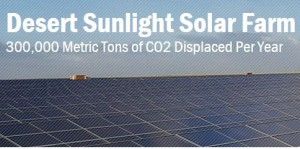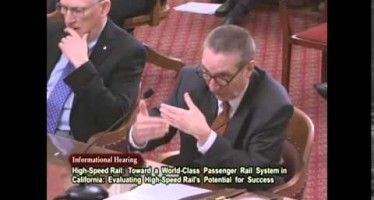Silicon Valley jolts CA energy game
 The sun is shining on private solar energy.
The sun is shining on private solar energy.
Beyond federal and state efforts, California’s tech titans have upped the ante with momentous new investments that promise to revolutionize electricity production.
For years, solar power has been touted by advocates as a major future source of “alternative energy.” Most recently, fresh off promising Californians a measure of federal drought relief, U.S. Interior Secretary Sally Jewell debuted Desert Sunlight. It’s a new 4,000-acre solar energy “farm” in the hot and dry outer reaches of of Riverside County and one of the largest such projects in the world.
But as the Los Angeles Times reported, the farm “opens at time of uncertainty for future utility-scale solar development in California, which has been slowing in recent years as federal assistance begins to disappear and investor interest fades.”
Meanwhile, Silicon Valley has turned its attention to solar power. Despite the prospect of a 20 percent drop in federal investment tax credits, tech entrepreneurs have taken steps to scale solar power use in a way that promises almost immediate results.
First Solar
USA Today reported First Solar received nearly $1.5 billion in federal loan guarantees to build out Desert Sunlight. But now priorities are shifting.
According to Market Watch, First Solar just inked a huge new deal to supply power to tech behemoth Apple Inc.:
“Apple committed $848 million for clean energy from First Solar’s California Flats Solar Project in Monterey County, Calif. Apple will receive electricity from 130 megawatts (MW)AC of the solar project under a 25-year power purchase agreement (PPA), the largest agreement in the industry to provide clean energy to a commercial end user.”
Although Apple CEO Tim Cook heartened environmentalists by casting the decision as a blow against climate change, it was ultimately driven by a simple imperative: making a good business bet.
“By 2016,” Mother Jones noted, “solar is projected to be as cheap or cheaper than electricity from the conventional grid in every state except three.”
In a substantial irony, Silicon Valley observers pointed out solar power has benefited greatly from rising costs for traditional energy, which California’s emissions law drives upward. As the Silicon Valley Business Journal observed:
“Chris Shea, who heads up the Silicon Valley territory for Livermore-based installer Solar Universe, a SolarCity competitor, said the industry has had a tailwind thanks to rising rates for conventional power. ‘Going green is a secondary benefit of the whole thing,’ he said. ‘Ultimately, it’s, “How do I get my cost of living down?” We’ve seen, since we started, almost a doubling of electrical cost that PG&E charges even to their lowest tier,’ said Shea, who employs about 20 out of his Santa Clara office.”
Solving the storage problem
SolarCity, one of the most important players in the industry, also recently figured into a massive new technological twist on alternative energy. Although state and federal regulators had pushed Americans to buy zero-emission cars, the technology faced a simple problem: battery life often didn’t measure up to what drivers’ hopes.
Now developments in car batteries are spreading to other areas of life that use batteries.
Tesla Motors CEO Elon Musk has partnered with SolarCity with an eye toward revolutionizing storage capacity — a challenge to the landscape dominated by public utilities. SolarCity, run by Musk’s cousin Lyndon Rive, has begun to install Tesla batteries.
And The Verge reported Musk and Rive have gone public with their big plans to scale stored solar energy well beyond cars:
“Musk and Rive mentioned that every SolarCity unit would come with battery storage within five to ten years, and that the systems would supply power at a lower cost than natural gas. Those batteries will come from the [Tesla] gigafactory, currently being built in Nevada. Once the factory comes online, the strong demand for energy storage will allow it to immediately ramp up production and achieve economies of scale. Tesla CTO JB Straubel (who has said that he “might love batteries more than cars”) says that the market for stationary batteries “can scale faster than automotive” and that a full 30 percent of the gigafactory will be dedicated to them.”
California officials, The Verge pointed out, have set out a policy goal of 1.3 gigawatts of storage by 2020.
The way things are turning out, it may be the private sector, not government-subsidized projects, that charges the electric future.
Related Articles
Crazifornia: Still more Cali-Incompetence on the Bay Bridge
May 23, 2013 By Laer Pearce It’s been almost a quarter century — 23 years, seven months and five days,
Summary details high-speed rail problems
As construction is going forward, now would be a good time to clear the air a little and summarize California’s high-speed
State Senate hearing casts doubt on high-speed rail
Editor’s Note: This is Part 1 of a series looking in depth at the latest hearing in the state




